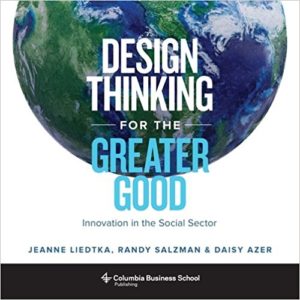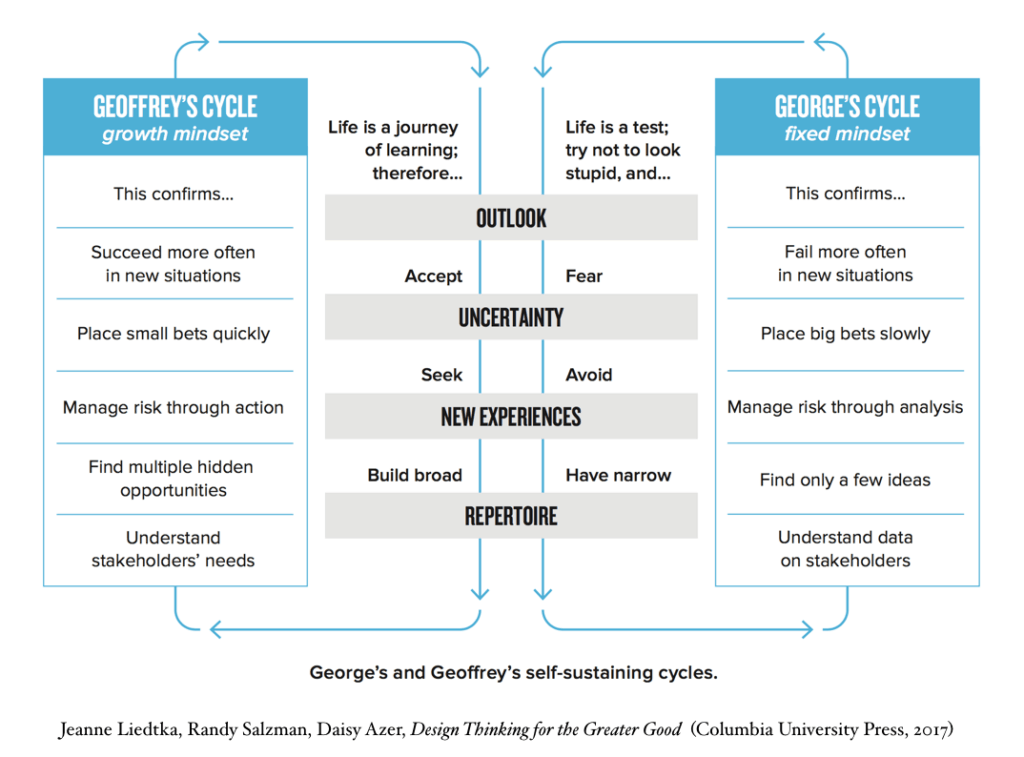Guest Post by Jeanne M. Liedtka, Randy Salzman, and Daisy Azer
I’m delighted to host this guest post featuring lessons from the trenches found in Design Thinking for the Greater Good: Innovation in the Social Sector. This newly released book is a study of design-led innovation projects by Jeanne M. Liedtka, Randy Salzman and Daisy Azer in which the authors demonstrate how design thinking principles reduce risk, manage change, bridge communication gaps and manage competing demands of diverse stakeholders.
Design Thinking for the Greater Good is available from Amazon, Barnes & Noble, and your local bookstore.

Design thinking is a tool for innovation in the corporate world and, increasingly, the social sector. In fact, what makes design thinking good for problem solving is also good for personal and professional growth. This is because design thinking embodies what Carol Dweck referred to as the growth mindset. With curiosity, effort and practice, we can design better outcomes for ourselves and others.
Contrast two archetypal managers, George and Geoffrey. George has a fixed mindset where life is a test. George fears and avoids failure so he places large bets slowly, he is uncomfortable with uncertainty and manages risk through analysis, he attempts to understand stakeholders through data, avoids new experiences and so finds only a few ideas. Geoffrey has a growth mindset where life is a journey of learning. Geoffrey embraces new experiences as a means to explore so he places small bets quickly, he is comfortable with uncertainty and manages risk through action. He attempts to understand stakeholders through their needs and by embracing new experiences, he finds hidden opportunities.
 The reality is that most of us are probably somewhere on a continuum along the two extremes of George and Geoffrey. Depending upon circumstances, each of us may be more George-like or Geoffrey-like.
The reality is that most of us are probably somewhere on a continuum along the two extremes of George and Geoffrey. Depending upon circumstances, each of us may be more George-like or Geoffrey-like.
How might we develop our growth mindset?
It starts with research and discovery. How might you reframe the problem? What do you want to achieve? Is it about time, flexibility, or responsibility? How might you leverage current skills and experiences? How does this tie to strategic organizational objectives? Who can you collaborate with within your organization or an external community? What new frontiers might you explore?
Design the smallest experiment to learn. Take progressive steps towards action starting with conversations and moving towards live experiments. Have a conversation with a trusted mentor. Design the smallest experiment to test assumptions and review whether or not you are on the right track. Perhaps organize an afternoon workshop or lunch n’ learn? Take on a small community project that involves stretch goals without disruptive change.
Evaluate the results, learn and refine. When setting up experiments to learn, clarify the assumptions being tested and how success is defined using specific quantitative and qualitative metrics. Learn and refine accordingly.
With a growth mindset, we don’t need to have the answers, we just have to get better at asking questions to find our way to the best solution. When we design small experiments to learn, the possibility of failure is not daunting but instead, cast in a new light, intentionally serves our efforts to advance our understanding. By trying different concepts, in quick successive sprints, we discover the ideal solution or blend that will work in practice. Why not take a small challenge or opportunity and test the theory that with effort, you will expand your repertoire and grow? You will not be disappointed.

